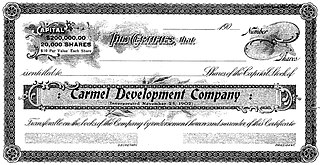
Michael James Murphy was an American master builder in the Carmel-by-the-Sea, California. He had a significant influence on the character and architecture of the Village of Carmel. From 1902 to 1940, he built most of the early houses in Carmel, nearly 350 buildings. He erected the first house in Pebble Beach and also in the Carmel Highlands. He founded M. J. Murphy, Inc., which continues to supply building material for the Monterey Peninsula.

Thomas Albert Work was an American businessman and banker of Pacific Grove, California, known around Monterey as T. A. Work. He was owner of the T. A. Work company that made him the single largest business property owner on the Monterey Peninsula. He owned several banks, including the First National Bank of Monterey, Bank of Pacific Grove, Salinas, and the Bank of Carmel.

Outlands in the Eighty Acres, also known as Flanders Mansion is an 8,000-square-foot Tudor Revival house. It is significant as a work of architect Henry Higby Gutterson and for its innovative construction with light grey interlocking Precast concrete blocks. The mansion is preserved within the Mission Trail Nature Preserve in Carmel-by-the-Sea, California. It was listed on the National Register of Historic Places on March 23, 1989.

Devendorf Park is a city park that occupies the block of Ocean Avenue and Junipero Street, Carmel-by-the-Sea, Monterey County, California, United States. The park is Carmel's central gathering place for outdoor events. The nearest larger town is Pebble Beach, California. The park is close to downtown shopping, the Carmel beach, and California State Route 1.

James Franklin Devendorf, was a pioneer real estate developer and philanthropist. Devendorf and attorney Frank Hubbard Powers (1864-1921), founded the Carmel Development Company in 1902. He became the "Father" of an artists and writers' colony that became Carmel-by-the-Sea, California, which included the Carmel Highlands, California. Devendorf spent the next 30 years of his life developing Carmel and the Carmel Highlands into a community of painters, writers, and musicians.

Frank Hubbard Powers, served in the California State Assembly for the 41st district from 1895 to 1897. He was a San Francisco attorney for Heller & Powers. He and real estate developer James Franklin Devendorf (1856-1934), founded the Carmel Development Company in 1902. They established an art colony that became Carmel-by-the-Sea, California, which included the Carmel Highlands, California.

Santiago Jacob Duckworth, known locally as S. J. Duckworth, served in the California State Assembly for the 61st district from 1893 to 1895. He was as an early Monterey pioneer businessman, real estate developer, and visionary of the short-lived Carmel City. In 1889, he wanted to build a Catholic summer resort, bought the rights to develop the area, filed a subdivision map, and started selling lots. After an unsuccessful undertaking, he sold the property to James Franklin Devendorf in 1902, who went on to found the Carmel Development Company and Carmel-by-the-Sea, and the Carmel Highlands in California, United States. Duckworth helped shape the early development of Carmel, bringing the first major developers and builders, and attracting some of the first residents.

Honoré Escolle, was as a French businessman from Monterey, California. He was an early pioneer who became a significant landholder in Monterey County. In 1878, he purchased 1,400 unsettled acres (570 ha) acres of the Sanchez's ranch near Gonzales, California. In the late 1880s, he sold 324 barren acres (131 ha) to Santiago J. Duckworth to build a Catholic Summer resort. This land later became Carmel-by-the-Sea, California

The Carmel Weavers Studio, also known as Cottage of Sweets, is a historic Tudor-style English cottage in Carmel-by-the-Sea, California. It was designed by Edward G. Kuster and constructed by Lee Gottfried in 1922 for Kuster's wife as a weaving shop. Since 1959, it has operated a candy store.

The Seven Arts Shop, is a one-story, wood-frame Tudor Storybook retail shop in Carmel-by-the-Sea, California. It has been designated as a significant commercial building in the city's Downtown Historic District Property Survey, and was recorded with the Department of Parks and Recreation on January 23, 2002.

The Seven Arts Building, is a one-and-one-half-story, Tudor Revival-style commercial building in downtown Carmel-by-the-Sea, California.
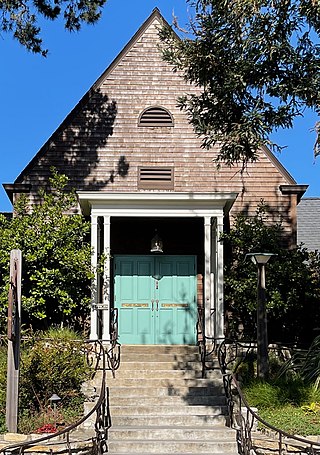
Carmel City Hall, is the seat of the municipal government of Carmel-by-the-Sea, California. It is a historic commercial building in the Carmel downtown district, located on Monte Verde Street and 7th Avenue. It is a good example of Shingle and American Craftsman architectural that was built in the 1910s. The building qualified as an important building in the city's downtown historic district property survey and was recorded with the California Register of Historical Resources on November 22, 2002.
The following is a timeline of the history of Carmel-by-the-Sea, California, United States.
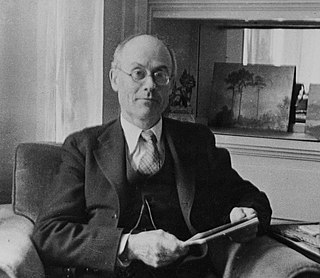
Louis Stanislaus Slevin, was an American photographer, known for his black-and-white images of the Monterey Peninsula. He was a pioneer in the early days of Carmel-by-the-Sea, California, the first to open a general merchandise store in 1905, the first postmaster, first express agent, and first city treasurer. His photographs of Carmel from 1903 to 1835 are recognized as a record of Carmel's past. His photo collection is housed at the Bancroft Library, University of California, Berkeley.
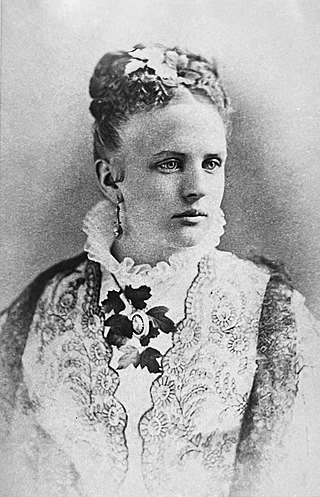
Abigail Jane Hunter, (1855–???) was as an early pioneer businesswoman, real estate developer, and visionary of Carmel-by-the-Sea. She is best known as Carmel's first woman real estate developer and important contributor in Carmel's early years. In 1889, she worked with Santiago James Duckworth to help build a Catholic summer resort called Carmel City. Hunter is credited with coining the name Carmel-by-the-Sea and utilizing it in promoting Carmel City through newspaper advertisements and postcard mailers. After an unsuccessful undertaking, she sold her Carmel holdings in 1900.

Carmel Point also known as the Point and formerly called Point Loeb and Reamer's Point, is an unincorporated community in Monterey County, California, United States. It is a cape located at the southern city limits of Carmel-by-the-Sea and offers views of Carmel Bay, the mouth of Carmel River, and Point Lobos. Carmel Point was one of three major land developments adjacent to the Carmel city limits between 1922 and 1925. The other two were Hatton Fields, 233 acres (94 ha) between the eastern town limit and Highway 1, and Carmel Woods, 125 acres (51 ha) tract on the north side.
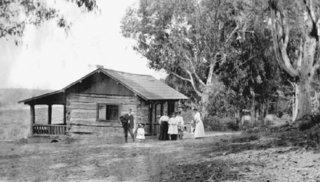
Murphy's Barn, also known as the Murphy Barn/Powers Studio, is a historic building that was built in 1846, by Matthew M. Murphey in Carmel-by-the-Sea, California. The structure is recognized as an important American period farm building and the oldest remaining artist's studio in Carmel. It was nominated by the Carmel City Council as a historical building and an application was submitted to the California Register of Historical Resources on July 1, 2002.
Percy Parkes was an American master builder in Carmel-by-the-Sea, California. Parkes was one of the main progressive builders in Monterey County through the 1920s and 1930s, and the first contractor to build homes on Scenic Drive. His best known commercial buildings are the Seven Arts Building (1928), the Dummage Building (1924), and the Percy Parkes Building (1926). His American Craftsman-style, influenced by the Arts and Crafts movement, is evident in the buildings he constructed during that time.
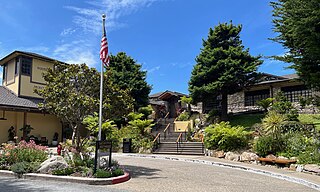
Highlands Inn is a historic resort hotel located in Carmel Highlands, California. Constructed in 1917 by Frank Devendorf, one of the early co-founders of Carmel-by-the-Sea and a real estate developer, the inn was built on land acquired in 1906 from local ranchers, south of Point Lobos. This establishment is part of the Hyatt Hotels Corporation.
